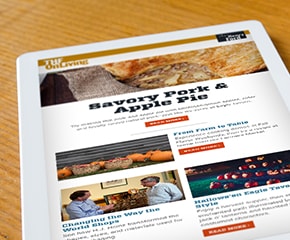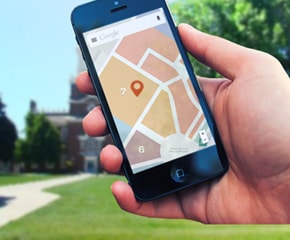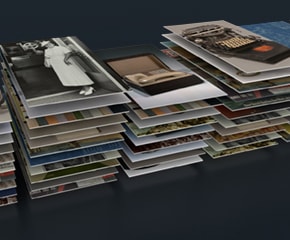
Henry Ford and Abraham Lincoln
11 artifacts in this set
Chair Allegedly Made from Rails Split by Abraham Lincoln, circa 1929
Chair (Furniture form)
Henry Ford admired Lincoln's down-to-earth, frontier character. The image of Lincoln as the "rail splitter" is central to that theme - it emerged during the 1860 Illinois Republican nominating convention when Lincoln's cousin emerged with a banner constructed of rails split by Lincoln and the audience went wild. This chair, acquired by Henry Ford, was said to consist of fence rails split by Lincoln.
Century of Progress Souvenir, Cross Section of Rail Split by Abraham Lincoln, 1933
Plaque (Flat object)
Henry Ford admired Lincoln's down-to-earth, frontier character. The image of Lincoln as the "rail splitter" is central to that theme - it emerged during the 1860 Illinois Republican nominating convention when Lincoln's cousin emerged with a banner constructed of rails split by Lincoln and the audience went wild. This fragment of a split rail was retailed at the 1933 Chicago World's Fair.
Abraham Lincoln Wedgwood Plate, circa 1906
Plate (Dish)
This souvenir pictorial plate was made as a Christmas 1906 premium for the Springfield, Illinois merchant, R.N. Herndon. Herndon's retailed mostly women's and children's clothing, specializing in gloves from 1866 to 1978. Collected by the Museum in 1931, the plate was one of the earliest Lincoln souvenirs - illustrating Augustus Saint Gaudens' Standing Lincoln sculpture and the Lincoln Home and Monument.
Square Piano, 1841
Square piano
Henry Ford collected many Lincoln-related artifacts, including this piano acquired as a relic from Abraham Lincoln's White House. Research since indicates that it was made by the Chickering Company of Boston, Massachusetts, in 1841 and had a history in the Boston area. There is no evidence that this object ever graced the White House, although it was chronologically possible.
Logan County Courthouse
Courthouse
Between 1840 and 1847, Abraham Lincoln tried cases here as a traveling lawyer. Visiting once or twice a year, he worked mostly on cases resolving neighbors' disagreements over land, contracts, and debts. As Lincoln traveled, people got to know him because he always took time to talk to them. This helped him earn votes later when he went into politics.
Walking Stick, 1861-1863, Allegedly Owned by Abraham Lincoln
Walking stick
Henry Ford collected many Lincoln-related artifacts, including this richly carved walking stick, containing images related to Emancipation. Its short length and notched peg at the end suggest that it is a handle once attached to a longer shaft. Our files hold affidavits by previous owners testifying that the stick was owned by the assassinated president. Whatever its origins, this is a remarkable example of Folk Art.
Split Rail, Said to Be Split by Abraham Lincoln
Rail (Object component)
Henry Ford admired Lincoln's down-to-earth, frontier character. The image of Lincoln as the "rail splitter" is central to that theme - it emerged during the 1860 Illinois Republican nominating convention when Lincoln's cousin emerged with a banner constructed of rails split by Lincoln and the audience went wild. Henry Ford acquired a group of rails said to have been split by Abraham Lincoln.
Charles Roscoe Miles with Henry Ford in Greenfield Village, October 1934
Photographic print
Henry Ford admired Lincoln's character and collected many Lincoln-related artifacts, including the Logan County, Illinois, courthouse in which Lincoln practiced law in the 1840s. Here, Mr. Ford stands outside the courthouse with Lincoln portrayer Charles Roscoe Miles. Miles was a distant relative of Lincoln's and used his resemblance to the president to support himself during the Great Depression.
Interior View of Logan County Courthouse in Greenfield Village, March 1935
Photographic print
Henry Ford admired Lincoln's character and his embodiment of the ideals of the "self-made man." Ford collected many Lincoln-related artifacts, including the Logan County, Illinois, courthouse in which Lincoln had practiced law in the 1840s. This photograph, taken in the 1930s, shows how Mr. Ford displayed furniture from the Lincolns' Springfield home, acquired to honor Lincoln and provide visitors with a sense of the time period.
Interior View of Logan County Courthouse in Greenfield Village, 1953
Photographic print
Henry Ford admired Lincoln's character and his embodiment of the ideals of the "self-made man." Ford collected many Lincoln-related artifacts, including the Logan County, Illinois, courthouse in which Lincoln had practiced law during the 1840s. This view, taken in the 1950s, shows furniture from the Lincolns' Springfield home and the chair from Ford's Theatre in which Lincoln was assassinated.
Interior of Logan County Courthouse in Greenfield Village, April 1954
Photographic print
Henry Ford admired Lincoln's character and his embodiment of the ideals of the "self-made man." Ford collected many Lincoln-related artifacts, including the Logan County, Illinois, courthouse in which Lincoln had practiced law in the 1840s. This photograph, taken in the 1930s, shows how Mr. Ford displayed furniture from the Lincolns' Springfield home, acquired to honor Lincoln and provide visitors with a sense of the time period.
This is user-generated content and does not reflect the views of The Henry Ford.


